Heat starts draining M. Cebu water sources: Measures in place but farmers feel ‘hot pinch’
Cebu City gov't, MCWD brace for El Niño as city upland areas struggle to find slowly 'disappearing water'

[FILE PHOTO] A farmer in Barangay Sudlon II, Cebu City shown here stocking up on water in this April 9, 2015 file photo, which was at the height of one of the worst el Niño’s Cebu has experienced. [CDN Digital FILE PHOTO]
(Last of two parts)
CEBU CITY, Philippines — Ginalyn Lawas, 35, who has been farming in Sitio Cantipla, Barangay Tabunan, in Cebu City, for 25 years, prefers rainy days to drought.
“Ang pinakafailure sa mag-uuma g’yod is ang bagyo ra man, [especially if] kusog nga hangin, pero kung uwan lang, makaharvest pa jud kay naa may mga eksperto unsaon paggamit sa medisina. Sa init, kung asa ra g’yod taman ang tubig, adto ra g’yod ta katanom,” Lawas told CDN Digital.
(The worst failure of a farmer is only when a typhoon hits [especially if] the wind is strong, but if it is only rain, we can still harvest from our crops because there are experts who teach us how to use medicine. In hot weather, we can only plant in areas where we can water them.)
Ginalyn’s family cultivates a range of vegetables, including kangkong, ginger, pechay, radish, and okra, on a 50 to 100-square-meter farm; however, a lack of water supply is currently limiting their capacity to farm.
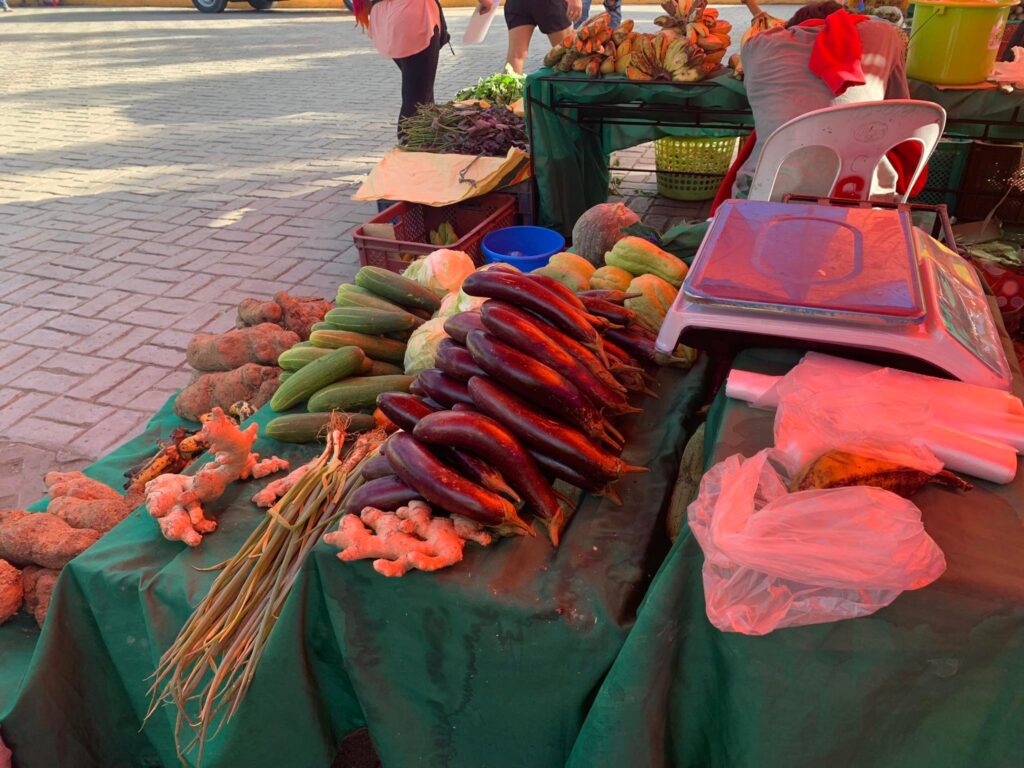
Ginalyn Lawas sells produce from her crops in downtown Cebu City on Friday, April 28, 2023. | Wenilyn Sabalo
Effects of heat felt
Like her, farmers in upland Cebu City rely significantly on irrigation and the rivers for their farming.
Ginalyn’s barangay is one of the 21 barangays in upland Cebu City not serviced by the Metropolitan Cebu Water District (MCWD).
“Gawas nga mamatay ang tanom, di man sad katanom. Kung naa man, kutob ra pod sa mabu-buan. So, kato ra juy mabuhi, gamay ra juy maharvest,” she lamented.
(Aside from the plants dying, we cannot also plant. If we have areas to plant, these can only be in areas where we have the capability to water them. So these are the only areas where the plants will grow, so our harvest will only be small.)
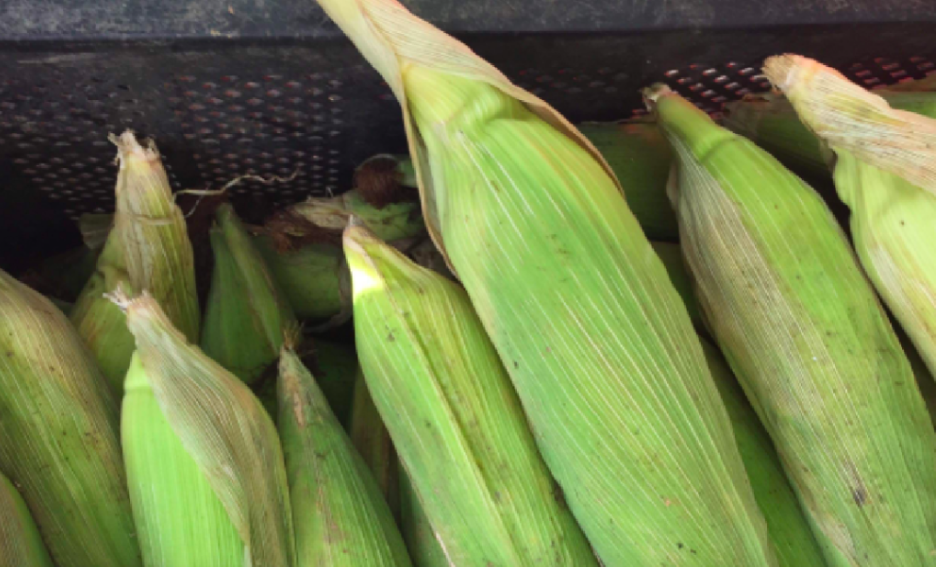
Farmers in Cebu City’s upland barangays also grow sweet corn, which they sell to mountain barangay visitors. | CDN Fiile photo
From 1 to 2 kilos of corn seeds, Jelly Borres, a farmer from Barangay Adlaon, which is 23 minutes by car from Barangay Tabunan, revealed that she could now only plant at most a half kilo of these.
She claimed they would now purchase raw corn at the Carbon Market for their sweet corn business.
The hot weather also made their corn crops more susceptible to corn blight, a foliar disease of corn that can seriously reduce yields in susceptible corn varieties, she said.
“Karon, kay dili g’yod kaayo ingon ka dagko ang mais tungod kay way tubig makuha. Wala mi ikabu-bo. Nihubas man ang mga sapa ron. Mga sangi-sangi ba, nihubas man.
(Now, our corn plants are not that many because we cannot get water for the plants. We don’t have anything to water them. The river has dried up. The creeks also dried up.)
The city government through the farmer’s association has distributed water containing kits like drums and hoses to affected farmers, but their question is: “I-asa man ang hose ug drum kung way tubig?” (where can we use this hose and drum if we have no water?)
READ: More hot days ahead as El Niño looms in the corner — Pagasa

A farmer in Barangay Sudlon II in Cebu City fetches water for his plants in this November 2016 photo. | CDN FILE PHOTO
Decrease in water supply noted
The MCWD, which currently serves only 33 percent of its consumers in Metro Cebu, has already noted a further decline in daily production, as surface water sources receive little to no rainfall for weeks.
Fortunately, during an almost two hours of light to moderate rain (with about 23 minute of moderate rains) on Saturday night, April 29, Cebu City received 11.6 millimeters of rain, equivalent to 58,000 barrels or drums per square kilometer, Pagasa said.
Although Metro Cebu has a total daily water demand of 556,000 cubic meters, the MCWD only produces 270,000 cubic meters on average daily on normal days, MCWD information officer Minerva Gerodias told CDN Digital in a sit-down interview.
However, since the last week of March 2023, the average daily water production has further dropped to 257,500 cubic meters.
Gerodias said two of MCWD’s surface water sources had already been producing below its daily average production.
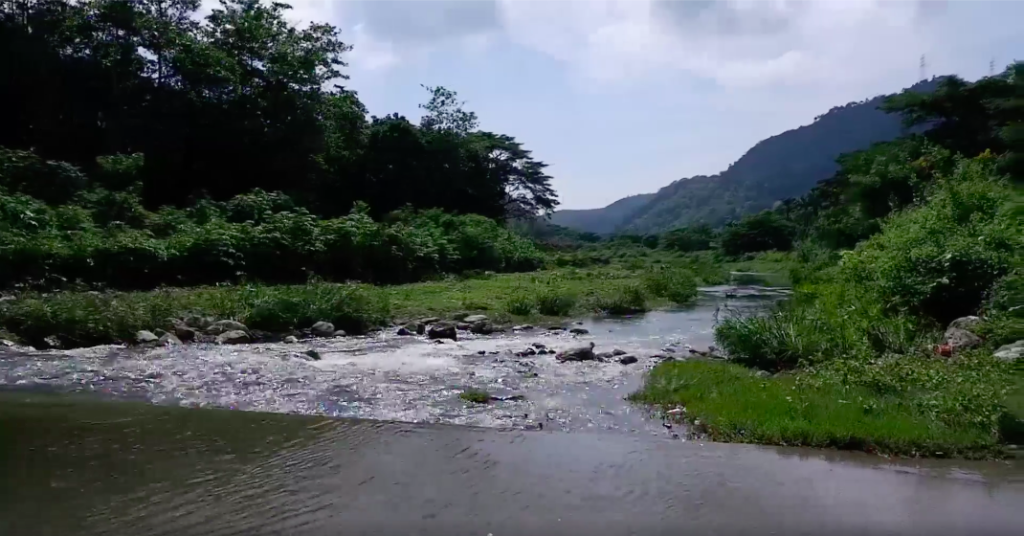
The Jaclupan Facility of MCWD, as seen in this December 2019 photo, normally produces 30,000 cubic meters of water daily. | photo courtesy to MCWD [FILE PHOTO]
MCWD’s Jaclupan facility has been producing only 24,000 cubic meters of water daily from its normal production of 30,000 cubic meters per day. The absence of rain also decreases supply in Buhisan Dam which is now producing only 3,500 cubic meters of water daily from the normal average of 5,000 per day.
“Nag-gradual na na siyag reduction. Kani jud duha ang ni decrease dayon [of all the sources] kay surface water man gud ni,” Gerodias said.
(Their reduction has been gradual. These two [water sources] decreased immediately [of all the sources] because this is surface water.)
Heat affects bulk water suppliers production
Aside from the two surface water sources, one of MCWD’s bulk water suppliers, which has a treatment plant in Compostela and utilizes the Cotcot River, has already started experiencing a decline in production last week.
From usually delivering 10,000 cubic meters of water daily to MCWD, the facility can only provide MCWD with 5,000 cubic meters per day.
However, according to Gerodias, 80 percent of the water sources used by MCWD come from underground sources compared to surface water sources.
MCWD manages 141 wells for its underground water production.
The Lusaran and Carmen facilities are also producing a stable supply–for now.
Measures to take if …
The decrease in water production from the facility in Compostela has already affected some areas in Mandaue City, including Looc, Opao, and Cambaro.
To address this, MCWD is augmenting the supply of the affected facilities from other sources.
“We have other sources man from underground. Pwede sila [MCWD operations] mag-valving. Ilang i-schedule ba nga naay himuon sila sa valve nga naay muagas sa surface area nga affected sa reduction,” Gerodias said.
(We have other sources from underground. They can [MCWD operations] do valving. They will schedule that they will do something to the valve so that their will be a flow of water to the surface area that has been affected by the reduction.)
“Another approach nga among gigamit is magdeliver mi. Magkuha mi og water from other sources, isulod sa truck, among i-deliver sa area, among i-inject sa system. Dili na delivery nga magkuha silag balde nga kuhaon sa truck. I-inject na sa system aron muagas gihapon ilang gripo,” she added.
(Another approach that we are using is we will deliver water to them. We will get water from other sources, we will put it in a truck, we will deliver it to their area, then we will inject the water to the water system. It is not a delivery that they will get the water using pails from the truck. We will inject the water from the truck to the system so that the faucets will have water.)
READ: Preparing for El Niño
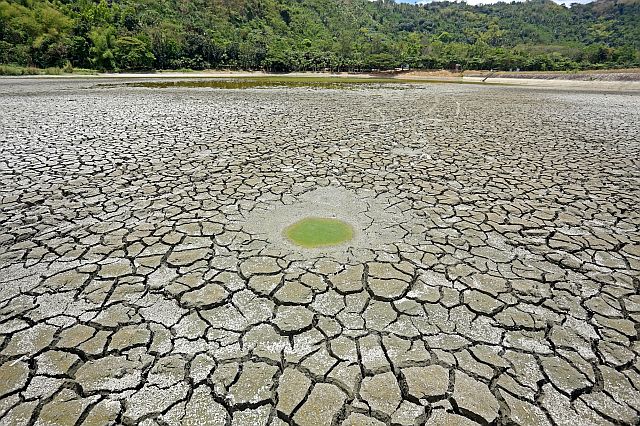
The heat brought about by the 2015-2016 El Niño affected the Jaclupan facility of the MCWD at that time, causing some parts of it to dry up as seen in this April 7, 2016 file photo. | CDN file photo
Worst El Niño
The 18-month-long El Niño from 2015 until 2016 was considered as the “the worst El Niño” in recent times for the country. In Cebu, that El Niño affected the underground water sources of MCWD.
And so, the MCWD is not completely ruling out the possibility that their underground sources could be impacted if the impending El Niño this year will turn out to be as “strong” as projected.
“That was the time nga naaffected ang underground water sources. Ni-crack ang Jaclupan River,” she said.
(That was the time that the underground water sources were affected. The Jaclupan Riverbed cracked.)
From 30,000 cubic meters of normal production, Jaclupan’s production went down to 5,000 cubic meters daily during the El Niño in 2016, while the Buhisan dam saw its lowest daily production on that year at 2,000 cubic meters daily.
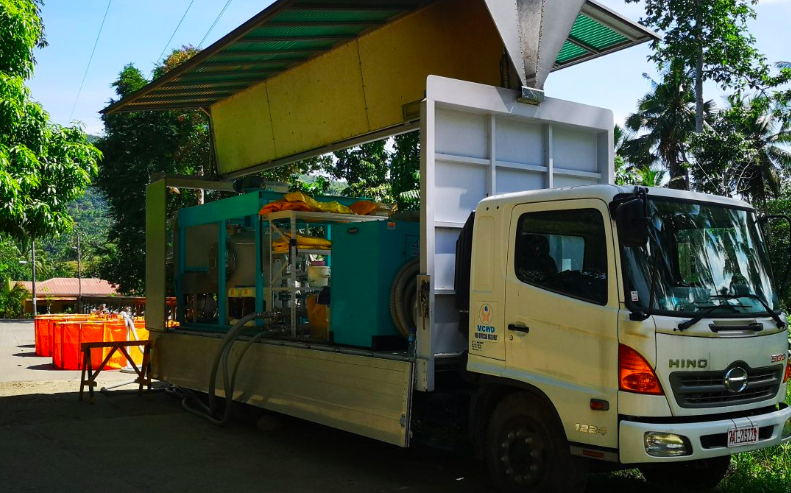
A mobile siphon truck is one of the trucks that the MCWD will deploy to help provide water to the mountain barangays in Cebu City if the coming El Niño will affect them. | MCWD photo
On Cebu City farmers’ plight
Since most of the Cebu City mountain barangays are not part of the areas currently served by MCWD, Gerodias said they could still grant the request of the City Council to deploy again MCWD’s Mobile Siphon Tanks (MST) to those areas.
Of the 80 barangays of Cebu City, 21 of these have no service connection with the water district.
The MST decision was also made about two to three weeks ago when Cebu City Councilor Pastor Alcover Jr. met with the City Agriculture Department, MCWD, and Cebu City farmers to discuss contingency measures on drought.
Just like past dry seasons, MCWD’s MST, a truck-mounted portable filter equipment, could be deployed to an identified water source upland to process river water into potable water.
One of the department’s two MSTs is prepared for deployment, but the city government must submit a formal request first.
If deployed, the MST could operate for 24 hours, and could process about 72 cubic meters of water per day.
The fuel and determining the locations where to deploy the MST are the counterparts of the barangay and the city government.
Gerodias said the identified source in the past years was the Cambinocot River.
“Hopefully, wala pa siya ni dry,” she added.
(Hopefully, this has not dried up yet.)
![The Cebu City government is also appealing to MCWD to allow the city’s water tankers to get water fire hydrants if the situation will worsen. | MCWD PHOTO [FILE PHOTO]](https://cebudailynews.inquirer.net/files/2023/04/Screen-Shot-2023-05-01-at-12.11.56-AM.png)
The Cebu City government is also appealing to MCWD to allow the city’s water tankers to get water fire hydrants if the situation will worsen. | MCWD PHOTO [FILE PHOTO]
Water from fire hydrants
In a phone interview, Alcover said he already communicated with the Office of the Mayor regarding the written request to MCWD and would follow up next week if it has been sent already.
“Ni request sad ta [with MCWD] nga kung magkalisod g’yod ang panahon, ang atong mga tankers, pwede makapangayo og tubig diri, pag abri sa mga fire hydrants diri sa syudad,” he said.
(We also requested (to the MCWD) that if weather will become worse, our tankers, can ask and get water here, by opening the fire hyrdrants here in the city.)
“Dunay mga irrigations didto sa bukid, mga 14 kabuok gagmay nga irrigations, among tan-awon didto kung unsa na jud ka [grabe] kay niingon ang presidente sa irrigators didto nga nihubas hubas na jud,” he added.
(We have irrigations in the mountain, 14 small irrigations there, we will check on what the situation is there if it has [already gotten worse] because the president of the irrigators there said that the irrigation has already started to dry up.)
Alcover then encouraged farmers to register with the City Agriculture Office to avail of free crop insurance and assistance.
Moreover, as part of the preparation against El Niño, the councilor said they would inspect the tankers in 11 upland barangays if these were in good condition in case they would be needed.
The Cebu City government is also planning to hold a two-day “Food Security Summit” as a mechanism to address issues on food supply security and inflation, amid the threat of El Niño.
It was tentatively scheduled on April 25 to April 26, but it has been postponed. This will be attended by all stakeholders in the food industry.
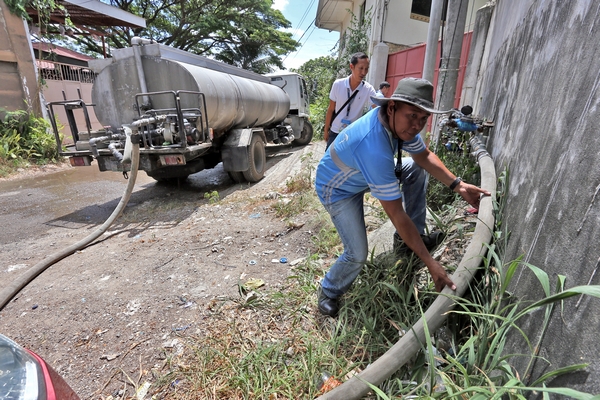
Water brought by a water truck from one of the MCWD’s water sources is injected into one of the main pipes in one of the service areas which has no water at that time in 2018. | CDN FILE PHOTO
Expansion projects; ‘desalination is the way’
The MCWD is undertaking expansion projects to serve its thirsty service areas.
This includes the Lusaran Bulk Water Project of JE Hydro, which is expected to cater to Budlaan, Binaliw, Agsungot, Guba, Cambinocot, Lusaran, Paril, and Busay.
The MCWD has a 15,000 cubic meters daily contract with JE Hydro, but initially, the MCWD receives only 9,000 cubic meters per day for areas like Busay, Apas, Lahug, Pit-os, Bacayan, Tigbao, and Talamban.
“Ang amo g’yong desalination ang among gisaligan. Sukad 2015 to 2016 El Niño, nagconsider na g’yod mi og other sources, until last year, finally, nakasign mi og contracts using desalinated seawater,” Gerodias said.
(We are depending in our desalination. Since the 2015 to 2016 El Niño, we have already considered other sources, until last year, finally, we signed contracts for the use of desalinated seawater.)
The MCWD has a 25,000 cubic meters contract with the Pilipinas Water Resources Incorporated (PWRI), a private water supplier at the South Road Properties (SRP) in Cebu City, and the firm is expected to start delivering desalinated water to MCWD by September this year.
“Ang usa is in Lapu-Lapu City, the Mactan Rock Industries. Desal siya, they initially delivered last January 2023 og 3,000 cubic meters. Expected that by May this year, mo full sila sa ilang 5,000 cubic meters,” she said.
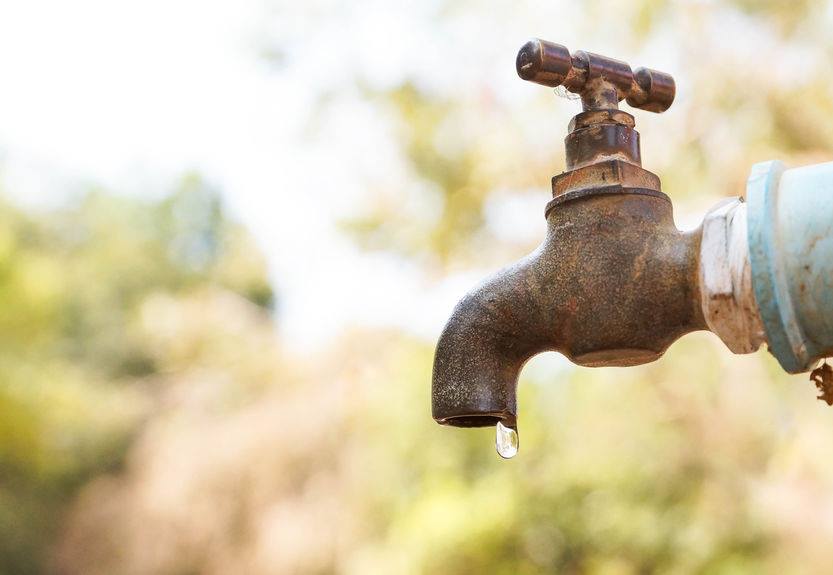
MCWD is banking on water from desalination facilities of its partners to help add to water supply of its consumers. | CDN FILE PHOTO
(One of them is in Lapu-Lapu City, the Mactan Rock Industries. This is desalinated water. They initially delivered last January 2023 some 3,000 cubic meters of desalinated water. We are expecting that by May this year, they will go full and deliver their 5,000 cubic meters.)
Gerodias said the MCWD also has nine water trucks on standby.
“In case nga muabot g’yod ang panahon nga magrationing ta, magkuha ta og supply from our water reservoir nga i-sud sa truck and i-deliver sa areas nga severely affected by injecting the water supply to their water systems.
(In case that the time will come when we really need to ration water, then we will get our supply from our water reservoir that we will put in a truck and deliver these to severely-affected areas where we will inject the water to the water systems.)
READ: MCWD to consumers: Conserve water
Non-revenue water and conservation tips
The MCWD appeals to consumers to conserve water and be proactive in addressing leaks.
Gerodias said the MCWD’s non-revenue water (NRW) rose to 30 to 32 percent, or around 86,000 cubic meters.
NRW is water that had been produced and is “lost” before reaching the consumer. Losses can be caused by physical factors such as leaks or apparent losses through water theft or metering inaccuracies.
Gerodias said simple actions like washing cars with a bucket instead of a hose would already be a big help in utilizing water that had now become a scarce resource.
Disclaimer: The comments uploaded on this site do not necessarily represent or reflect the views of management and owner of Cebudailynews. We reserve the right to exclude comments that we deem to be inconsistent with our editorial standards.

